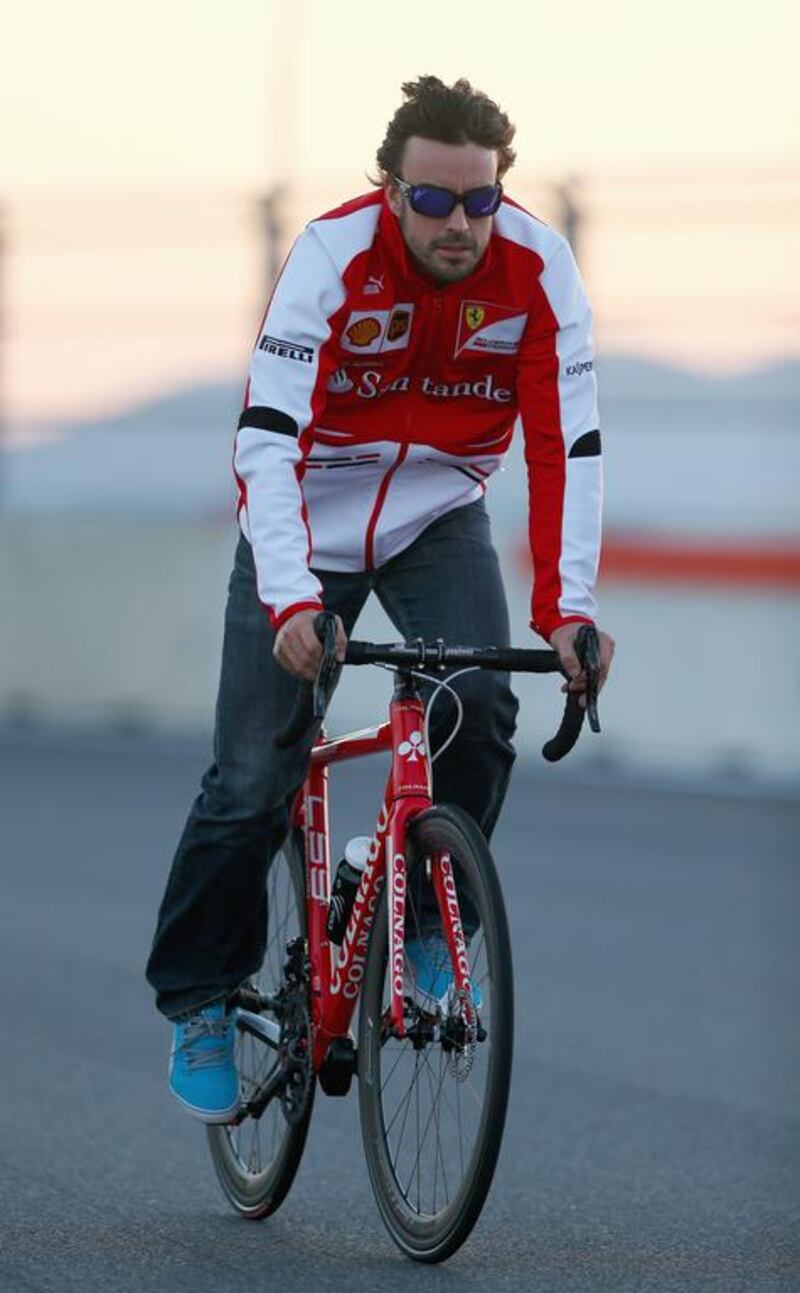Much is made of the need for supreme fitness in Formula One. In the three weeks leading up to the start of the 2013 season, Fernando Alonso cycled 936 kilometres, ran 91km, swam 81km and spent seven hours in the gym.
His employers, Ferrari, called it a training regimen “worthy of an Olympic athlete”.
The necessity of such levels of physical health is questionable. Kimi Raikkonen, the 2007 world champion, is by no means a slouch but is more renowned for his love of the good life than sprints. The Finn’s compatriot, Heikki Kovalainen, an athletic driver formerly of McLaren-Mercedes and Caterham, believes that optimal fitness is not essential.
“We don’t really need to be in such an extreme physical condition, because we don’t have one target like the Olympic Games that we want to compete in,” he said.
“We need to stay fit and well throughout the season and at a relatively good level, but not necessarily an Olympic level.”
Kovalainen was discussing the likelihood of doping in F1, a scenario he thinks is not a problem.
“We don’t really need to get bigger muscles or get our oxygen intake to such a level where you would take some stuff,” he said. “So I don’t see it being a big issue in this sport.”
Yet in sport, as in life, there are always questions regarding unscrupulous sorts seeking to achieve their goals through illegal means. Earlier this year, the French senate published a report detailing drug usage in sport, paying particular attention to cycling.
Marc Sanson, the former head of France’s anti-doping council, claimed during his time in charge, between 2003 and 2005, that F1 drivers used performance-enhancing drugs.
“For many years, drivers used tacrine, a product used in the treatment of diseases such as Alzheimer’s, to remember the circuits more easily,” Sanson said.
Gary Hartstein, a former F1 medical delegate, immediately dismissed Sanson’s claim, tweeting that it smacked of a “loudmouth know-nothing looking for a headline”, adding that “tacrine is not and has never been on the prohibited list”.
In person, Hartstein said: “I saw that silly story and was shocked because, unfortunately, that drug doesn’t even work for the people it is supposed to work for. There is the kind of practical aspect of things in that, if it did work, we would probably all be taking it.
“Everybody over the age of 50 would be pounding at the door of their GP asking for it. And it has tons of side effects.
“The interesting thing is this is an anti-doping expert – and I have nothing against him, I don’t even know him, but I just get annoyed that people blab off to the press about stuff – it’s not even on the prohibited list and never has been.
“By definition, if it is not on the prohibited list, then you can take it all day every day and it’s not doping. You may get a performance advantage, you may die, any number of things might happen, but it’s not doping – maybe stupid, but not doping.”
The World Anti-Doping Authority (Wada) produce an annual list of prohibited drugs. This year’s document is nine pages long and includes everything from cannabis and anabolic steroids to morphine and beta-blockers. Tacrine is not included on the list in any capacity.
Jean-Charles Piette, an F1 medical delegate and deputy president of the FIA Medical Commission, told ESPN last year that such are the minuscule margins in qualifying that drivers could imagine doping might be beneficial. However, Hartstein, who parted company with the FIA last December, is convinced the paddock is drug-free.
“These guys are clean,” he said. “I don’t say that because I am optimistic or naive, I say it because I was deeply involved in the FIA’s anti-doping and I know what these guys need to drive to the best of their ability. There is nothing on the prohibited list that would allow them to do that, period. And they know that.”
Mark Webber, the Red Bull Racing driver and often the most outspoken man in the paddock when it comes to contentious issues, had never heard of tacrine or the concept of “memory doping”. He said when it comes to drugs in motorsport, though, you can never get complacent.
The FIA, by complying with Wada, subjects F1 drivers to random drug tests, which must comply with the independent agency’s international standards.
“There is enough money around to test diligently in the sport, so while things are pretty good, you can never get too blase about these kinds of things in terms of doing enough,” Webber said. “I am not standing up and saying we need more testing – I was tested after Germany and it was the first time they had done blood [tests], which was good.
“They always apologise when they are doing the test, but I am happy to do it; it’s a good thing to do. You know this lovely paddock, but can you trust every person? You have to keep people on their toes.”
Kovalainen said he, too, had never heard of tacrine and was sceptical of the benefits.
“It sounds strange because, at least for me, I don’t have any trouble remembering the circuits. If we were going to circuits like Nordschleife [the 22.8km, 160-turn northern loop of the Nurburgring] and you only had two laps to practice, then maybe. But I don’t think it would be of any use to modern-day F1 drivers.”
gmeenaghan@thenational.ae





